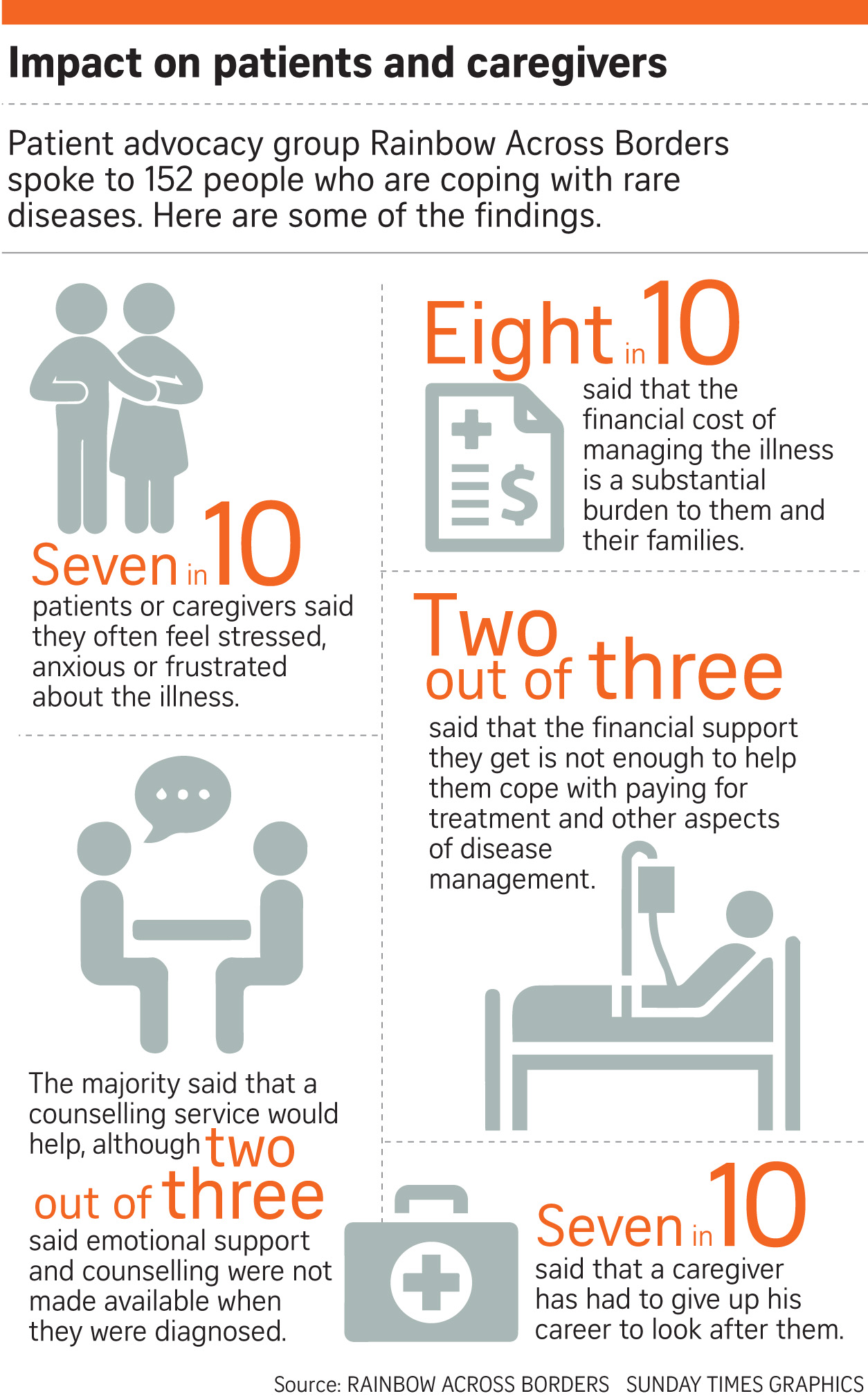What is Rare Disease?
A rare disease also referred to as an orphan disease, is any disease that affects a small percentage of the population (ranging from 1 in 1,500 to 2,000 individuals in the Singapore context). Most rare diseases are genetic, and thus are present throughout the person’s entire life, even if symptoms do not immediately appear. Many rare diseases appear early in life, and about 30 percent of children with rare diseases will die before reaching their fifth birthday.
Rare diseases are long-standing, life-threatening, progressively disabling conditions that affect a small percentage of the population and require multi-disciplinary care. One rare disease may affect only a handful of patients in one demographic (eg. In the EU) and another might affect as many as 50,000 in another region (eg. Asia). 
Relatively common symptoms can hide underlying rare diseases leading to misdiagnosis and delaying treatment. Quintessentially disabling, the patient’s quality of life is affected by the lack or loss of autonomy due to the chronic, progressive, degenerative, and frequently life-threatening aspects of the disease.
Although rare and genetic diseases, and many times the symptoms, are uncommon to most doctors, rare diseases as a whole represent a large medical challenge. Combine this with the lack of financial or market incentives to treat or cure rare diseases, and you have a serious public health problem.
Rare diseases do not recognize race, color, nationality, or social standing…. they could happen to anyone.
Here are a few statistics and facts to illustrate the breadth of the rare disease problem worldwide.
- There are approximately 7,000 different types of rare diseases and disorders, with more being discovered each day.
- Rare diseases are characterized by a broad diversity of disorders and symptoms that vary not only from disease to disease but also from patient to patient suffering from the same disease.
- 80% of rare diseases have identified genetic origins whilst others are the result of infections (bacterial or viral), allergies, and environmental causes, or are degenerative and proliferative.
- 30%, of children, won’t live beyond their fifth birthday.
- Rare diseases are responsible for 35% of deaths in the first year of life.
- 95% of rare diseases lack an FDA (USA) approved treatment.
- 8 years is an average time for rare disease patients to receive an accurate diagnosis.
- 350 million people suffer from rare diseases globally.
- Rare diseases impact more people than cancer and AIDS combined.
- 50% of rare diseases do not have a disease-specific foundation or research support group.
What is Genetic Disease?
While many common diseases (such as heart disease, high blood pressure, and types of cancer) have some genetic (that is, inherited) components, genetic diseases are those caused by specific, identifiable elements of a person’s genetic makeup.
 A change in the genetic code can occur during the formation of the egg or sperm, or during or soon after conception. In some cases, genetic changes can be inherited from a parent who carried the defective gene but is clinically healthy.
A change in the genetic code can occur during the formation of the egg or sperm, or during or soon after conception. In some cases, genetic changes can be inherited from a parent who carried the defective gene but is clinically healthy.
Genetic diseases can present at any age, infancy, childhood, or adulthood. It can cause common problems, for example, developmental delay and poor growth. It can also have rarer presentations such as heart or liver failure.
Many advances have been made in looking for a cure for genetic diseases including gene therapy and bone marrow transplantation. However, in most cases, there is no cure. Even so, many patients with genetic diseases can lead fulfilling lives with proper management of their symptoms.
Autosomal recessive genetic diseases
When both parents carry the same recessive gene, there is a 25% chance that the child will inherit the trait from both parents and have the disease, a 50% chance that the pregnancy will inherit the trait from only one parent, or a 25% chance that the pregnancy will not inherit the trait from either parent. An example of autosomal recessive disease is Pompe disease which occurs in 1 in 40,000 live births.
Dominant genetic diseases
They are caused by a mutation in one copy of a gene. If a parent has a dominant genetic disease, then each child has a 50% chance of inheriting the disease. An example of a dominant genetic disease is Achondroplasia which occurs in 1 in 25,000 live births.
Sex-linked genetic diseases
They affect males and females differently. This is a smaller set of diseases related to gene mutations on the X or Y chromosomes. One rare disease linked to the X chromosome is Fabry disease.
Chromosome abnormalities
They can occur in any pregnancy. Sometimes these risks are related to the parent’s age and involve extra or missing chromosomes. The second type of chromosome abnormality is a change in the structure or organization of the chromosomes.
Multi-factorial traits
These occur due to many complex interactions and combinations of maternal, environmental, and genetic influences. In most cases predictive genetic testing is not available for multi-factorial traits, however, a family history assessment may provide more accurate recurrence risks.
